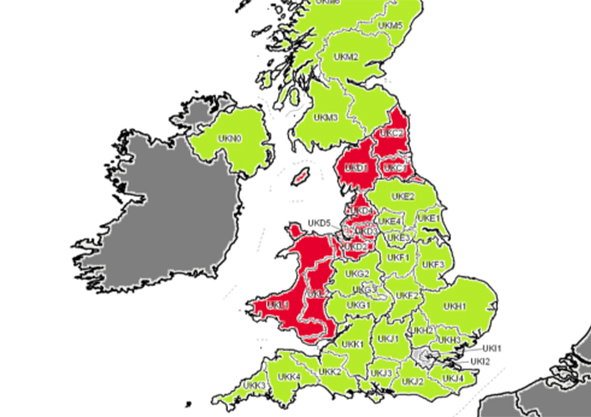
A revision to regional greenhouse gas emissions figures could deliver financial benefits to growers and reopen market opportunities for arable crops in the biofuels supply chain.
The Department for Transport (DfT) and an industry consortium (AEA, AIC, British Sugar, DARD, DECC, Defra, Ensus, E4tech, GAFTA, NFU, REA, SCOPA, and SFQC) have been working to revise a report that details the ability of UK regions to meet legally-binding greenhouse gas emissions criteria under the Renewable Energy Directive (RED).
HGCA was asked earlier this year to review the raw data in the original 2010 report to ensure that conclusions were based on robust and up-to-date evidence.
“At present, most crops meet the current RED sustainability criteria and can freely enter the biofuel supply chain. The existing land-use change criteria tend only to be an issue for crops grown on relatively small areas of land with a high biodiversity value or significant stocks of carbon,” stated Harley Stoddart, HGCA Research and Knowledge Transfer Manager.
“But, from 1 April 2013, further crop-specific emissions criteria come into force which could restrict market access by growers in certain UK regions and mean crops from these regions could effectively be traded at a discount. The findings in the 2010 report would potentially affect trade in a large number of regions,” added Mr Stoddart.
The consortium was able to use more robust data for average yields, oil content (oilseed rape), fertiliser use, fuel consumption, soil organic matter and nitrogen content of residues returned to soils.
Following the review, the revised picture is as follows:
· Oilseed rape – 97% of UK production meets the criteria (was less than 5%)
· Sugar beet – 100% of UK production meets the criteria (was 0%)
· Wheat – 84% of UK production meets the criteria (was c. 83%)
In December, the revised report will be submitted to the DfT and should be passed on to the European Commission shortly after.
If the Commission accepts the report, the new emissions figures will automatically override the 2010 figures and will be able to be used by the supply chain with immediate effect.
Mr Stoddart added: “Growers should not be alarmed if their region fails to meet the criteria. Growers should discuss contracts with buyers and use carbon footprinting tools to help understand what can be done on farm to reduce greenhouse gas emissions.”
The European Commission’s (EC) Renewable Energy Directive (RED) aims to reduce greenhouse gas (GHG) emissions and improve energy security by reducing Europe’s dependence on fossil fuels.
The Directive currently requires that 20% of the Commission’s energy should come from renewable sources and at least 10% of each Member State’s transport energy consumption should be from renewable sources by 2020.
The Renewable Energy Directive (RED) is helping to drive demand for biofuels derived from the cultivation of agricultural crops, such as oilseed rape, wheat and sugar beet.
Biofuels must save 35% in greenhouse gas emissions compared to fossil fuel equivalents.
